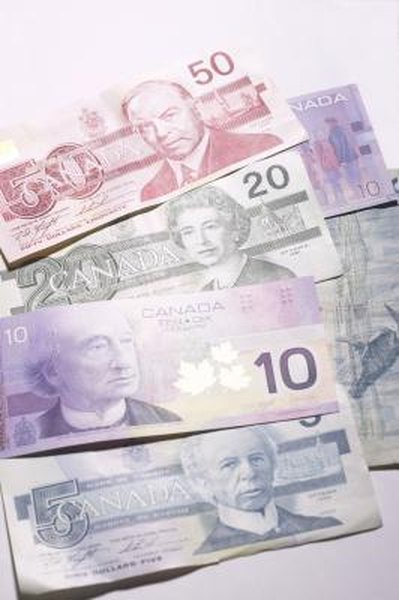How to Place Pending Forex Order
Investors buy and sell currencies in the forex market.
Hemera Technologies/AbleStock.com/Getty Images
A pending order in the foreign exchange, or forex, market instructs your broker to automatically buy or sell a currency when the market reaches a certain price in the future. This type of order differs from a market order, which instructs your broker to immediately buy or sell at the current price. A pending order gets you into a trade when conditions are just right for your strategy and helps you avoid missing a trade, even if you step away from your computer. Trading software and order-entry methods differ among brokers, but the general types of pending orders are the same.
Open the order window in your forex broker’s trading software.
Step 2Select the currency pair to trade in your order window. Currencies trade against one another in pairs. The first currency in the pair is the one that your pending order instructs your broker to buy or sell. When you buy or sell this currency, you simultaneously sell or buy the second currency, respectively. For example, if you buy the U.S. dollar vs. the Canadian dollar, you buy U.S. dollars and sell Canadian dollars simultaneously.
Step 3Select “Pending Order” from the order type drop-down menu.
Step 4Type the price at which you want the pending order to execute in the price box. Forex prices are typically quoted to four decimal places, although some brokers quote them to five. In this example, assume the U.S. dollar/Canadian dollar pair currently trades for 0.9875, which means it costs 0.9875 Canadian dollars per U.S. dollar. Assume you want to buy the U.S. dollar if the price rises to 0.9925. Type “0.9925” into the price box.
Step 5Select the specific type of pending order from the available choices in your order window. There are four general types of pending orders. A “buy limit” order buys the currency when it reaches a specified price that is below the current market price. A “buy stop” buys the currency when it reaches a price that is higher than the current price. A “sell limit” order sells the currency at a price that is above the market. A “sell stop” sells it at a price that is below the market. In this example, select a "buy stop" order, which will buy the U.S. dollar vs. the Canadian dollar when the current price rises to 0.9925.
Step 6Click the check box in the expiration parameter and select a date and time that you want the pending order to expire. If you want it to remain open until it executes or until you cancel it, leave the check box unchecked.
Step 7Type the number of contracts, or lots, you want to trade in the volume box. In a standard account, one contract represents 100,000 units of the first currency in the pair. You can also trade partial contracts, such as 0.1 contract. In this example, if you want to buy $10,000 U.S. dollars vs. the Canadian dollar, select a volume of 0.1.
Step 8Click “Place” or a similar button to place your pending order.
References
Tips
- Some brokers allow a combination of the four main pending-order types. For example, on a “buy stop limit” order, the market must rise to a specified price, then pull back to another specified price before your order executes.

